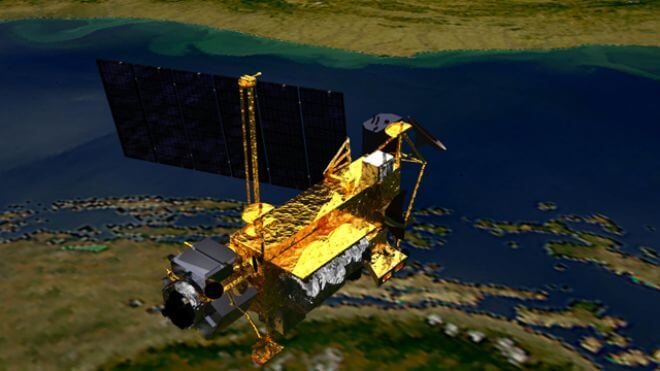
NASA satellite falls back to Earth, believed to have landed in Pacific Ocean.
NASA says its Upper Atmosphere Research Satellite (UARS) fell back to Earth between 11:23 p.m. Friday, Sept. 23 and 1:09 a.m. Saturday Sept. 24.
The re-entry time and location of debris impacts have not been confirmed, though it’s believed to have landed far east of the United States in the Pacific Ocean—If calculations were the slightest bit off, pieces could have hit the United States although NASA has yet to receive reports of injury or property damage.
Reportedly, during its re-entry period, the satellite journeyed over the east coast of Africa, over the Indian Ocean and Pacific Ocean, across northern Canada, over the Atlantic Ocean to a point over West Africa, and finally was believed to have fell somewhere in the Pacific Ocean.
The satellite, weighing a reported six tons is believed to have broken into pieces during re-entry and mostly burned up in the atmosphere, although 26 pieces could have survived and reached Earth’s surface.
According to NASA, because of the satellite’s orbit, any surviving components of UARS should have landed within a zone between 57 degrees north latitude and 57 degrees south latitude although it’s impossible to pinpoint where exactly in that zone debris landed, but the debris footprint is estimated to be some 500 miles long.
It returns to Earth after it’s launch in the early 1990’s when it embarked on a 14-year mission to make long-term records of chemicals in the atmosphere.
































